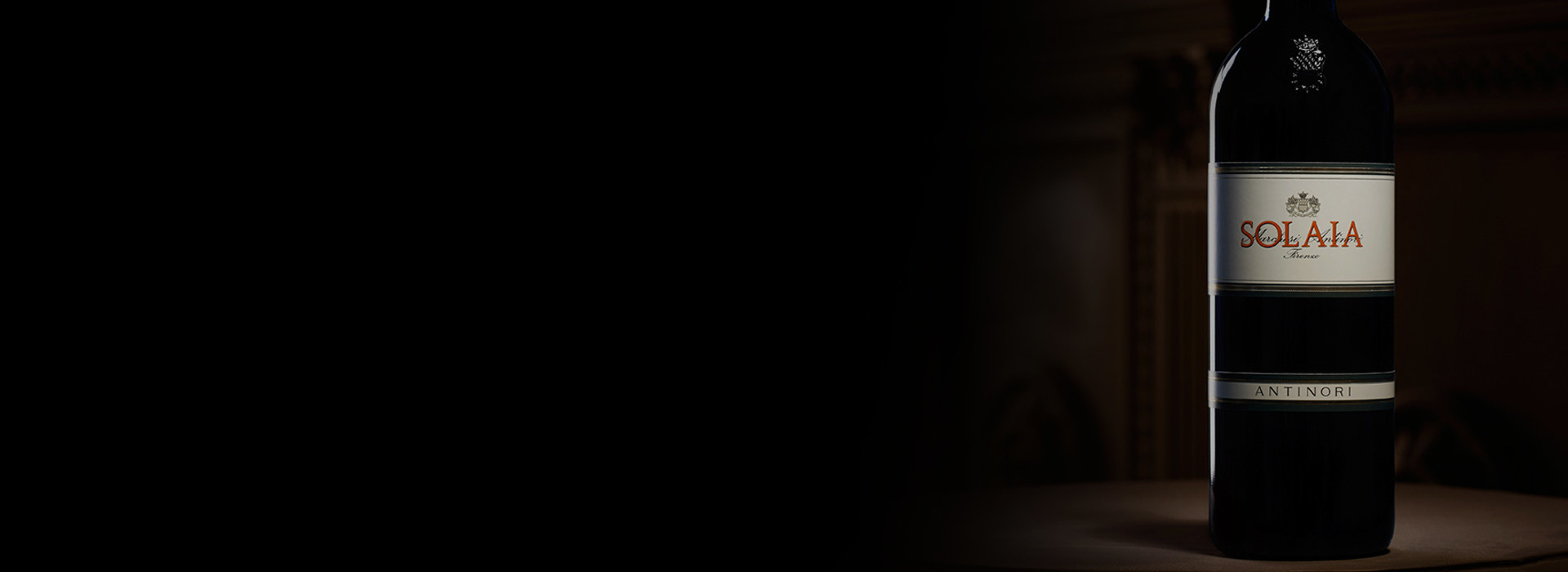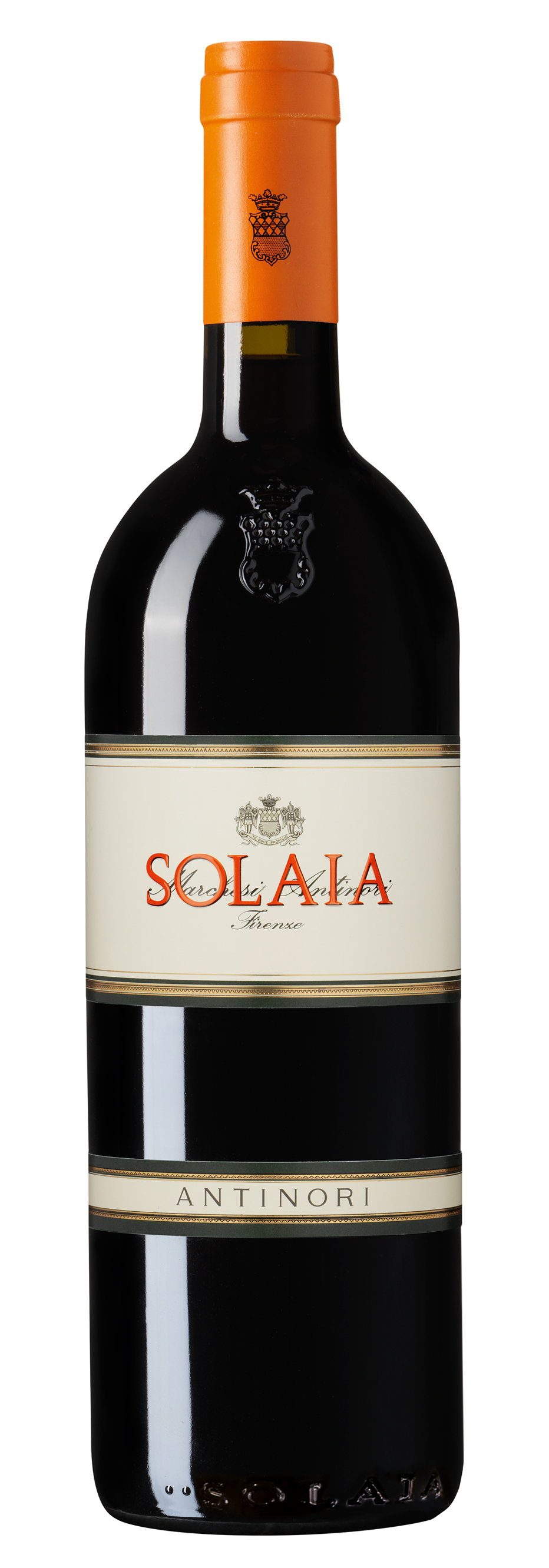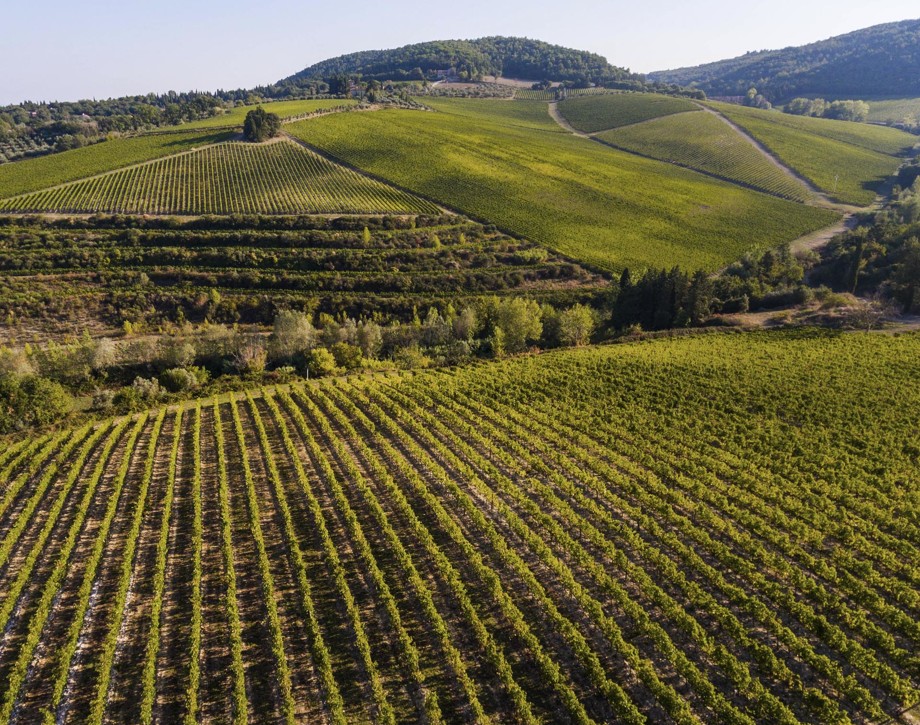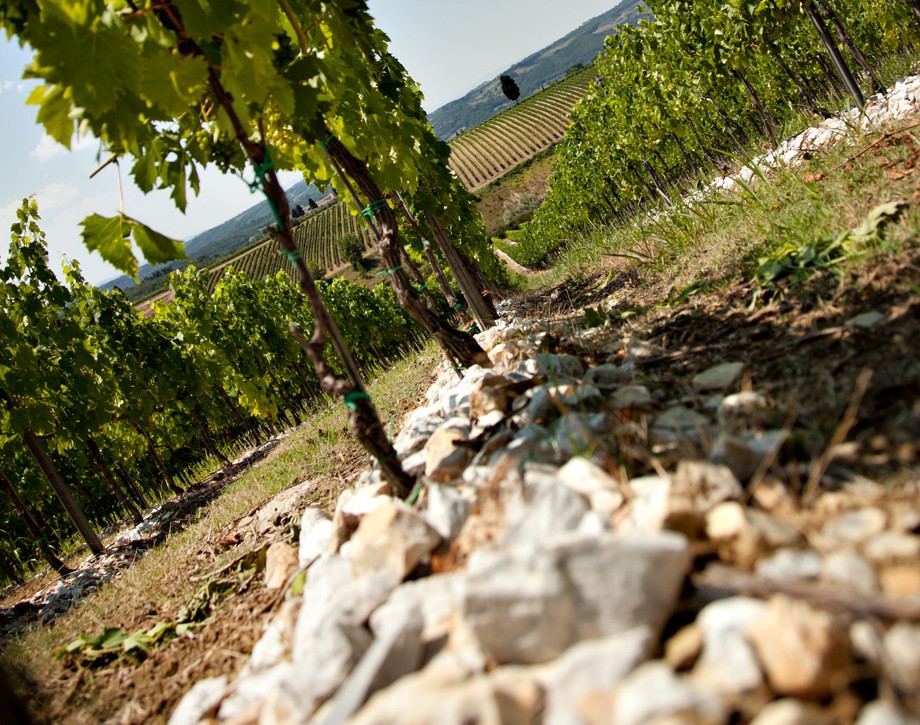Solaia

Climate
A year characterized initially by a mild and pleasant autumn with normal temperatures and little rainfall. Winter was cold and with adequate rains for the period. Spring began with rather cool and dry weather, to the point that the normal phases of the growing season, first the bud burst and, more importantly, flowering took place slightly later than, on average, recent vintages. Ample precipitation, instead, fell in April and May, fundamental in assisting the vineyard in sustaining the lengthy dry spell which, beginning in June and lasting all the way through the month of August, conditioned the growth and development of the vines, both in terms of the canopy and of the size and weight of the bunches and berries. The long-awaited rains of late August were essential in balancing plant growth, allowing all the different varieties to continue the ripening of their grapes. The months of September and October, both mild in their temperatures and rather rainy, allowed the crop to fully ripen both in terms of sugar and aroma and in tannins and structure as well. The harvest was concentrated in the period between September 25th and October 10th and required careful and precise selection both of the bunches during picking and of the berries during the selection process on the sorting tables in the cellar.
Vinification
The climatic conditions of 2012 required a constant and careful process of selection of the grapes both during the growing season and during the harvest; the Solaia grapes were picked solely by hand and separately, variety by variety, as well, taking into account, additionally, the many variable factors linked to terroir such as the conditions of the soil, the different altitude of the various vineyard parcels, and the different character created by the ripening process itself. Once in the cellar, the grapes were delicately destemmed and the individual berries, before being pressed, carefully selected on the sorting tables: here attention to detail was at its maximum, as it is of fundamental importance that only perfect grapes end up in the 1600 gallon (6000 liter), conical fermenting tanks. During the fermentation the period of skin contact, the must was slowly transformed into wine; in a vintage such as 2012 it was essential to give maximum attention to the conservation of freshness and aroma without sacrificing extraction of color and the management of tannins, necessarily supple and elegant. All of this required great sensitivity, a thorough understanding of the grapes themselves, and a constant attention to the wine, which was only run off its skins after attentive daily tasting. Once the wine was separated from its skins, the focus turned to the malolactic fermentation which, carried out in oak barrels, added additional finesse and drinking pleasure to the wine. Only then could the aging process, one which took place in new French oak barrels and lasted approximately 18 months, begin. During this period, the various lots, fermented separately on the basis of their variety and the viticultural variables of their source, matured in oak and were finally blended together a few months before the bottling, carried out at the estate itself.
Historical Data
Solaia is a 50 acre (20 hectare) vineyard with a southwestern exposure located at an altitude between 1150 and 1325 feet (350-400 meters) above sea level and with a stony soil of “alberese” (hard limestone) and “galestro” (flaky calcareous clay) rock. The vineyard is located at the Tignanello estate. The Antinori family produced this wine for the first time in the year 1978, and the initial blend was 80% Cabernet Sauvignon, and 20% Cabernet Franc, a formula repeated in 1979 as well. In the following years, 20% of Sangiovese was introduced and certain adjustments were also made in the rapport between Cabernet Sauvignon and Cabernet Franc until the current blend was settled upon. Solaia is produced only in exceptional vintage, and was not produced in 1980, 1981, 1983, 1984, and 1992.
Tasting Notes
An intense ruby red in color with purple highlights, the nose of the wine is dominated by varietal notes of excellent freshness and an elegant intensity. The 2012 Solaia has a classic style and is characterized on the palate by the pleasurable harmony of flavors created by a fine balance between acidity and tannins and high level fruit which lasts from the initial impact through to the lengthy finish and aftertaste. A grand personality and a great persistence make the finish exceptionally complex and vibrant.
Awards
James Suckling 97/100 USA Wine Spectator 93/100 USA Wine Advocate 95/100 USA Wine Enthusiast 97/100 USA Daniele Cernilli 98/100 Italy I vini di Veronelli Super 3 stelle e rosso dell'anno Italy Antonio Galloni 94/100 USA I vini dell'Espresso 18,5/20 Italy Slow Wine Grande Vino Italy Falstaff 95/100 Austria

The Wine
The sunniest part of the Tignanello's hillside is home to the Solaia vineyard. The very best grapes from the very best vineyard. All the rest is passion, the utmost care and research. These are the secrets of Solaia together with the finest Cabernet Sauvignon, Cabernet Franc and Sangiovese grapes from its namesake vineyard.

Climate
A year characterized initially by a mild and pleasant autumn with normal temperatures and little rainfall. Winter was cold and with adequate rains for the period. Spring began with rather cool and dry weather, to the point that the normal phases of the growing season, first the bud burst and, more importantly, flowering took place slightly later than, on average, recent vintages. Ample precipitation, instead, fell in April and May, fundamental in assisting the vineyard in sustaining the lengthy dry spell which, beginning in June and lasting all the way through the month of August, conditioned the growth and development of the vines, both in terms of the canopy and of the size and weight of the bunches and berries. The long-awaited rains of late August were essential in balancing plant growth, allowing all the different varieties to continue the ripening of their grapes. The months of September and October, both mild in their temperatures and rather rainy, allowed the crop to fully ripen both in terms of sugar and aroma and in tannins and structure as well. The harvest was concentrated in the period between September 25th and October 10th and required careful and precise selection both of the bunches during picking and of the berries during the selection process on the sorting tables in the cellar.
Vinification
The climatic conditions of 2012 required a constant and careful process of selection of the grapes both during the growing season and during the harvest; the Solaia grapes were picked solely by hand and separately, variety by variety, as well, taking into account, additionally, the many variable factors linked to terroir such as the conditions of the soil, the different altitude of the various vineyard parcels, and the different character created by the ripening process itself. Once in the cellar, the grapes were delicately destemmed and the individual berries, before being pressed, carefully selected on the sorting tables: here attention to detail was at its maximum, as it is of fundamental importance that only perfect grapes end up in the 1600 gallon (6000 liter), conical fermenting tanks. During the fermentation the period of skin contact, the must was slowly transformed into wine; in a vintage such as 2012 it was essential to give maximum attention to the conservation of freshness and aroma without sacrificing extraction of color and the management of tannins, necessarily supple and elegant. All of this required great sensitivity, a thorough understanding of the grapes themselves, and a constant attention to the wine, which was only run off its skins after attentive daily tasting. Once the wine was separated from its skins, the focus turned to the malolactic fermentation which, carried out in oak barrels, added additional finesse and drinking pleasure to the wine. Only then could the aging process, one which took place in new French oak barrels and lasted approximately 18 months, begin. During this period, the various lots, fermented separately on the basis of their variety and the viticultural variables of their source, matured in oak and were finally blended together a few months before the bottling, carried out at the estate itself.
Historical Data
Solaia is a 50 acre (20 hectare) vineyard with a southwestern exposure located at an altitude between 1150 and 1325 feet (350-400 meters) above sea level and with a stony soil of “alberese” (hard limestone) and “galestro” (flaky calcareous clay) rock. The vineyard is located at the Tignanello estate. The Antinori family produced this wine for the first time in the year 1978, and the initial blend was 80% Cabernet Sauvignon, and 20% Cabernet Franc, a formula repeated in 1979 as well. In the following years, 20% of Sangiovese was introduced and certain adjustments were also made in the rapport between Cabernet Sauvignon and Cabernet Franc until the current blend was settled upon. Solaia is produced only in exceptional vintage, and was not produced in 1980, 1981, 1983, 1984, and 1992.
Tasting Notes
An intense ruby red in color with purple highlights, the nose of the wine is dominated by varietal notes of excellent freshness and an elegant intensity. The 2012 Solaia has a classic style and is characterized on the palate by the pleasurable harmony of flavors created by a fine balance between acidity and tannins and high level fruit which lasts from the initial impact through to the lengthy finish and aftertaste. A grand personality and a great persistence make the finish exceptionally complex and vibrant.
Awards
James Suckling 97/100 USA Wine Spectator 93/100 USA Wine Advocate 95/100 USA Wine Enthusiast 97/100 USA Daniele Cernilli 98/100 Italy I vini di Veronelli Super 3 stelle e rosso dell'anno Italy Antonio Galloni 94/100 USA I vini dell'Espresso 18,5/20 Italy Slow Wine Grande Vino Italy Falstaff 95/100 Austria

Tenuta Tignanello
The Tenuta Tignanello estate is in the heart of Chianti Classico, in the gently rolling hillsides between the Greve and Pesa river valleys. It extends over an area of 319 hectares (788 acres), of which 130 (321 acres) are dedicated to vines. Two of the estate’s prized vineyards are on the same hillside, Tignanello and Solaia, on soils that originated from marine marlstone from the Pliocene period rich in limestone and schist. The vines enjoy hot temperatures during the day and cooler evenings throughout the growing season. The estate’s two signature wines, Solaia and Tignanello, are produced from these vineyards and have been defined by the international press as “among the most influential wines in the history of Italian viticulture”. According to Marchesi Antinori, Solaia and Tignanello are an ongoing challenge and a never-ending passion. The Tignanello estate has vineyards of indigenous Sangiovese grapes as well as some other untraditional varieties such as Cabernet Franc.

Soil
Soils originating in the Pliocene period, rich in marine fossils with veins of clay. Rich presence of calcareous rocks and marl.
















